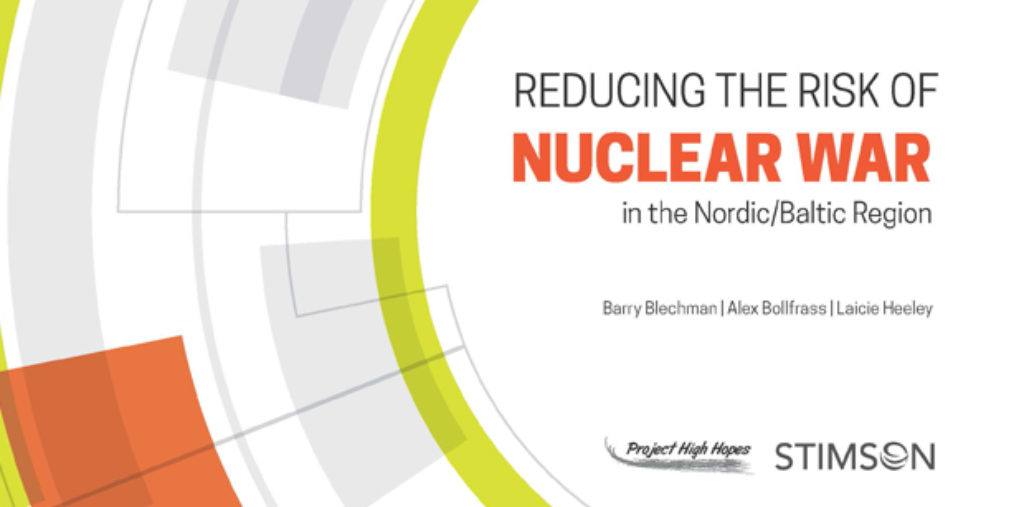Europe is currently experiencing escalating political and military tensions that are rekindling fears of war between Russia and NATO. Any such conflict would inherently include a risk of nuclear weapons use. The Stimson Center, partnered with Project High Hopes, is examining the results of such nuclear exchanges and, more importantly, developing initiatives to avoid such catastrophes.
Vladimir Putin has revealed that he was prepared to use nuclear weapons in the Ukraine crisis and would protect ethnic Russian populations through any means necessary. There are significant ethnic Russian populations in Estonia and Latvia with a history of disagreements and some conflict with the national governments. Any armed conflict between a Russian secessionist movement and a Baltic gov-ernment could provide Russia an excuse for military intervention, which could easily devolve into a war with NATO and a risk of nuclear use.
Illustratively, one could imagine a scenario we call Escalation in Estonia, beginning with the seizure by pro-Russian rebels of local government buildings. Responding to an Estonian request, NATO mobi-lizes against the rebels, and Russian troops move across the border. Desperate to end the conflict before more NATO forces can arrive, in conformity with its doctrine “escalate to deescalate,” the Russians launch two nuclear-armed missiles on NATO forces. NATO, in turn, responds with two nuclear bombs delivered by US B-2 bombers on Russian military headquarters within Estonia. As a result, Tallinn is largely destroyed and nearly 100,000 civilians and military service men and women could be expected to die as a result of the conflict and its aftermath.
In a second illustrative scenario Russia, perceiving NATO to be divided and irresolute, purposefully sponsors unrest in the Baltics to start a Regional War with the goal of regaining control of all the Baltic states, as well as Ukraine. Both sides begin large-scale mobilizations and Russian forces move into the three Baltic nations. As major NATO reinforcements arrive in Poland and the Baltic states, Russia re-sorts to nuclear weapons and NATO retaliates in kind. After an exchange of 20 nuclear weapons, the conflict leaves nearly one million dead with long-lasting impacts on the region’s environment, econo-mies, and health.
Although the risk of such conflicts and nuclear use is small, it is essential to reduce these dangers even further. Two initiatives could help. First, NATO should strengthen the conventional military capabilities it is able to move quickly into the Baltic region, so that Russian leaders would be unlikely to believe they could seize Baltic capitals so quickly that NATO would be unable to respond. For in-stance, equipment for an armored brigade could be pre-positioned in each Baltic nation and battalions rotated through on temporary deployments for joint exercises. A US division headquarters also could also be established in Poland, along with support units, to provide coherence to the Baltic brigades. Additionally, full NATO fighter squadrons could be rotated through the Baltic nations and other near-by NATO nations on a near-continuous basis.
Second, the region’s governments should examine the possibility of establishing a Baltic Nuclear Weapons Free Zone (NWFZ). Implementing such a zone would necessitate removal of Russian weap-ons from Kaliningrad and NATO nuclear weapons from Germany; all other nations bordering the Baltic are already nuclear free. While difficult in current geo-political circumstances, pressures for NWFZ negotiations could direct the regional security dialogue toward a positive goal and away from the current escalatory rhetoric. A large swath of the globe is already protected by NWFZs. Many were created without the initial support of key nations and once established, provided a continuing source of pressure for comprehensive enactment.

